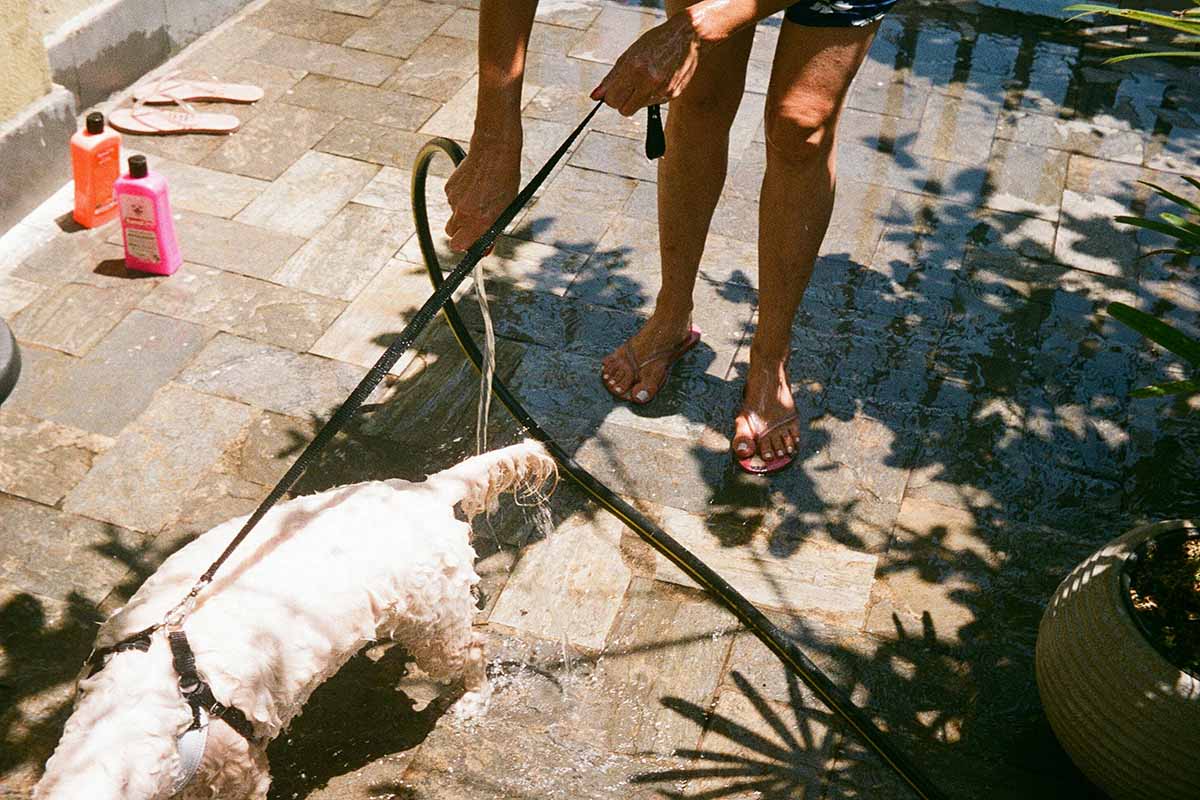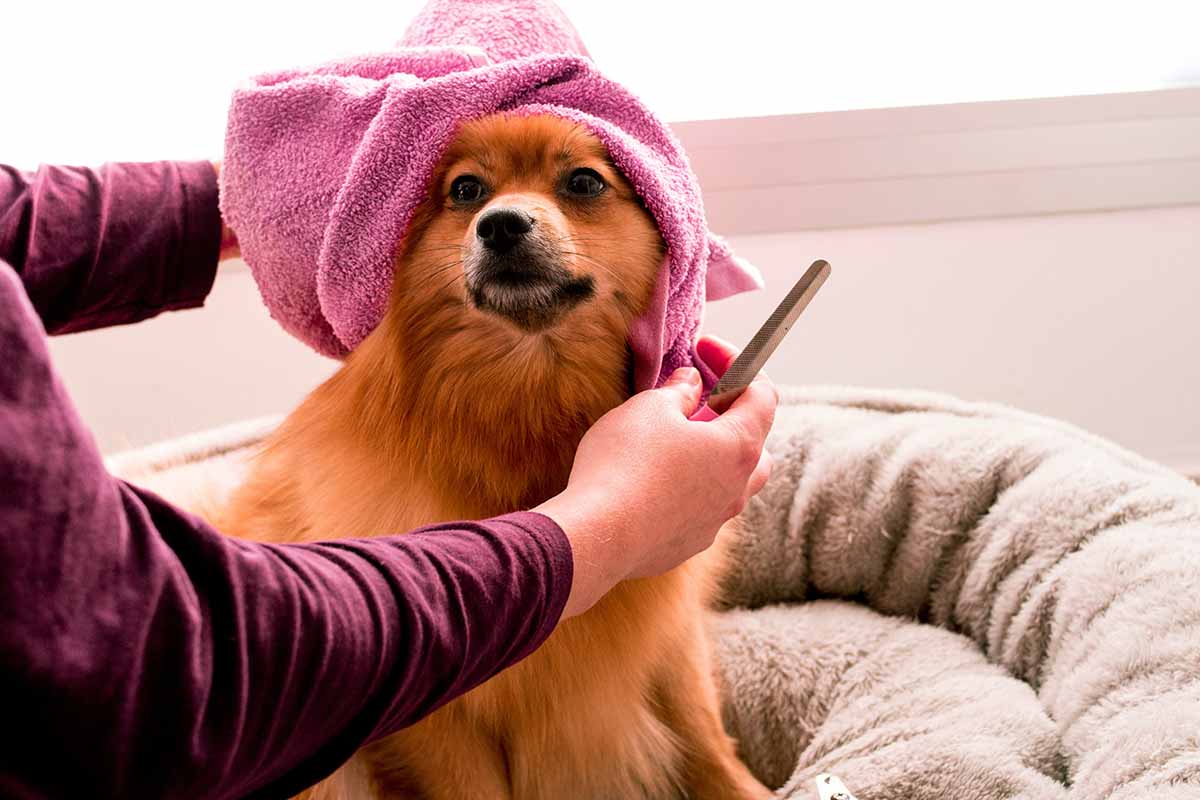Bath time – it’s a necessary ritual for keeping our furry companions clean and healthy, but let’s face it, it can often devolve into a sudsy showdown filled with stress and squirming. But fear not, fellow animal lovers! By shedding light on common mistakes and incorporating expert tips, we can transform bath time from a dreaded chore into a purrfect (or woof-tastic) bonding experience.

Mistake 1: Shampoo Shenanigans
Ditch the human suds! Reaching for the “bargain bin” or even your own shampoo might seem harmless, but these can wreak havoc on your pet’s delicate skin. Their pH balance is different from ours, and harsh chemicals can strip away natural oils, leading to dryness, irritation, and even infections.
The Fix: Embrace pet-specific shampoos! Opt for formulas designed for your animal’s coat type and skin sensitivity. Consult your veterinarian for personalized recommendations. Did you know a 2023 study by the Journal of Veterinary Dermatology found a 30% decrease in skin irritation in dogs using vet-recommended shampoos compared to generic brands? It’s an investment in your mental health as well as theirs.
Mistake 2: Temperature Tug-of-War
Imagine the shock of an icy plunge – not exactly bath time bliss, right? Blasting your pet with frigid or scalding water is not only uncomfortable, but it can also cause burns. It should be comfortably warm, similar to what you would use for a baby
The Fix: Aim for lukewarm water, no hotter than you’d use for a baby. Test it on your wrist first! It might seem obvious, but according to a 2022 survey by the American Pet Products Association, 42% of pet owners admit to using water that’s too cold or hot for their pets. Be kind to those sensitive paws!
Mistake 3: The Rinsing Rush
You wouldn’t want soapy residue left on your own skin, and neither does your pet! Rushing the rinse leaves behind shampoo suds, which can irritate their skin and attract dirt, defeating the purpose of the bath altogether.
The Fix: Patience is key! Rinse thoroughly, paying special attention to areas like underarms, between toes, and around the tail. A gentle handheld sprayer can help reach hidden nooks and crannies. Remember, a suds-free pet is a happy pet!

Mistake 4: The Towel Toss
Picture this: you step out of the shower, and someone roughly throws a towel at you. Not exactly the most pleasant experience, is it? The same goes for our furry friends. Roughly toweling them can damage their fur and skin.
The Fix: Go for the gentle touch! Gently squeeze excess water with a microfiber towel, then pat them dry. Consider using a specialized dog drying robe for maximum comfort and warmth. After all, bath time should be a spa-like experience, not a towel tussle.
Beyond the Basics: Dive Deeper into Bath Time Bliss
Now, let’s delve into some lesser-known mistakes that can make bath time even more enjoyable for both you and your pet:
Mistake 5: The Fear Factor
A negative bath time experience can create lasting anxiety for your pet, turning future sudsy encounters into stressful struggles.
The Fix: Make bath time a positive association! Praise your pet throughout the process, offer yummy treats, and use calming techniques like gentle massage. Consider desensitization training if your pet exhibits significant fear. Remember, a relaxed pet is a cooperative pet, making bath time a breeze.
Mistake 6: The Frequency Faux Pas
Over-bathing can strip your pet’s natural oils, leading to dry, itchy skin and discomfort. We wouldn’t wash our hair every day, and neither do they need daily baths!
The Fix: Consult your veterinarian to determine the ideal bathing frequency based on your pet’s breed, activity level, and coat type. Generally, dogs need baths every 4-8 weeks, while cats are usually self-sufficient groomers. Remember, less is often more when it comes to bath time frequency.
Mistake 7: The Earful Mistake
When bathing your pet, it’s important to be gentle and mindful of their sensitive areas, particularly their ears and eyes. Avoid getting water and shampoo directly into their ears, as this can lead to infections.
The Fix: Never directly spray your pet’s ears with water. Use a cotton ball dampened with ear cleaner recommended by your veterinarian to gently clean the outer ear canal. Remember, their ears are delicate and require special care.
Bonus Tip
Turn bath time into a spa experience with calming music, aromatherapy sprays (safe for pets, of course!), and gentle brushing. A relaxed pet is not only easier to bathe, but they’ll also associate bath time with positive feelings, making future sudsy sessions a breeze.
Conclusion
By avoiding these common bath time mistakes, you can ensure that your pet stays clean, healthy, and happy. Remember, bath time should be a positive experience for both you and your furry friend, so take your time and make it as enjoyable as possible.
For more valuable pet care tips and information, be sure to check out PetsCityHub. We’re dedicated to providing pet owners with the resources they need to keep their furry companions happy and healthy. From grooming advice to nutritional guides, PetsCityHub has got you covered!
FAQs (Frequently Asked Questions)
How often ought my pet to be bathed?
The frequency of baths depends on your pet’s breed, lifestyle, and skin condition. Generally, dogs with normal skin can be bathed every 4-6 weeks, while cats typically don’t need baths unless they’ve gotten into something messy. Over-bathing can strip away natural oils, so it’s essential to find the right balance.
Can I use my own shampoo on my pet in a pinch?
It’s not recommended. Human shampoos can be too harsh for pets’ skin and may contain ingredients that are harmful if ingested or absorbed through the skin. It’s best to use a pet-specific shampoo formulated for their needs.
How can I make bath time less stressful for my pet?
Start by making bath time a positive experience. Introduce your pet to the bathroom gradually and use treats or toys to create a positive association. Keep the atmosphere calm and relaxed, and go at their pace. Additionally, using a non-slip mat in the tub can help your pet feel more secure.
What should I do if my pet hates baths?
If your pet is particularly fearful or resistant to baths, try desensitizing them gradually. Start by simply bringing them into the bathroom and rewarding calm behavior. Gradually introduce them to the sound of running water and the bathtub without actually bathing them. Patience and positive reinforcement are key.
How can I dry my pet if they hate the noise of the hairdryer?
If your pet is afraid of the hairdryer, you can try using a towel to dry them thoroughly. Alternatively, you can use a hairdryer on a low heat setting and hold it at a safe distance to minimize noise. Some pets may feel more comfortable with a quiet handheld dryer or simply air drying in a warm room.













